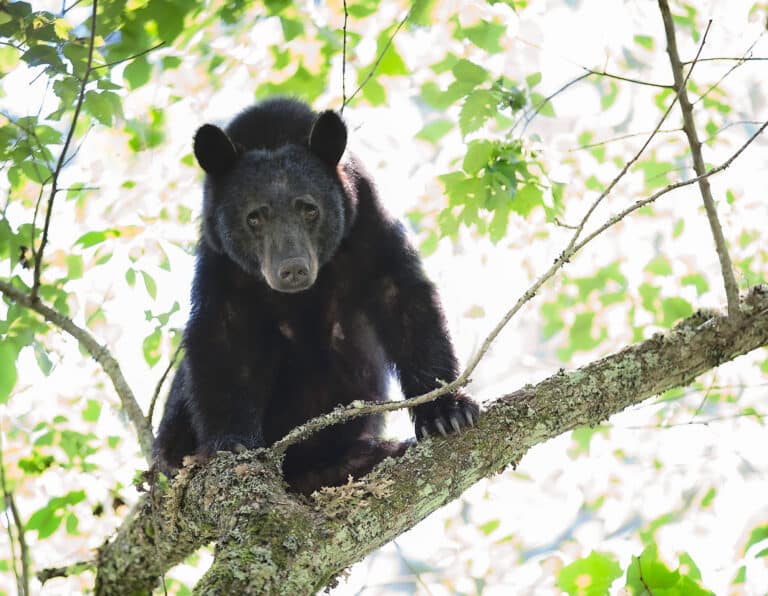by Graham Averill
No outdoor activity is more ridiculed than birding. It’s the “Dungeons and Dragons” of the outdoor world. And yet 50 million people consider themselves bird watchers. It’s one of the fastest growing sports (yes, I said sport) in the country. And now there’s an aggressive new breed of birders emerging who see birding as the ultimate outdoor challenge. They summit mountains, travel to the ends of the earth, and fight hurricane winds in order to see specific birds, often spending thousands of dollars in the process. These birders have taken their pastime from hobby to obsession, displaying a sense of self sacrifice and dedication that makes even the most obsessed ultra runner look like a weekend jogger. Forget what you think you know about birding. The truth is, it can be one of the most adventurous pursuits in the mountains.
A Portrait of Obsession
Phoebe Snetsinger is the closest thing birding has to a rock star. The wealthy grandmother spent the last 18 years of her life navigating the world trying to see every bird on the planet. Snetsinger saw 8,500 of the 10,000 known species of birds on the planet before dying in a tragic car accident on her third birding trip to Madagascar.
Experts say it’s impossible to see every species of bird, but people still try. So far, Snetsinger, with unlimited resources, got the closest and still fell 1,500 species short. But then birding is a hobby plagued by disappointment. To see even the most common bird on any given day takes patience, timing, and more than a little luck.
“Disappointment is part and parcel in birding,” says Simon Thompson, staff ornithologist for Chimney Rock Park and owner of Bird Ventures, Inc., a birding guide service that takes clients all over the world to see rare birds. “We drove through the night up to Maryland to see a particular shorebird. It left ten minutes before we got there. Some say birding is a sport, but I think it’s more like gambling.”
Thompson says that like gamblers, birders aren’t always successful, but when they are, when they see that bird they’re looking for, the feeling can’t be described. Runners get an endorphin fix; kayakers experience “the zone;” bird watchers get the “birder’s high.”
“Birding is an addiction and obsession that can be taken to the extremes,” Thompson admits.
Take the people who participate in The Big Year, an annual birding competition where birders compete to see the most species of birds in America during a single year. During The Big Year, birders sacrifice their personal and professional lives, traveling thousands of mile and spending upwards of $12,000 a month seeking out birds. Men have lost their wives and their jobs during The Big Year. They’ve gone into thousands of dollars worth of debt. The award-winning book, The Big Year, follows three birders as they risk everything to win the competition during 1998, the best birding year in recorded history. The Big Year winner in ‘98 saw 745 species of birds (there are only 800 species of birds in America). The three birders detailed in the book traveled 270,000 miles in 365 days, looking for birds. They went to the edges of Alaska, waiting for El Nino to blow rare birds into American air space. One birder of lesser means lived for three days in the Dakotas, surviving entirely on one jar of peanut butter and one bag of pretzels, just to see a bird.
A variety of similar birding competitions pit one birder against another on a slightly less drastic level. The Big Day boils the Big Year concept down to a single 24-hour period. America’s Birdiest City is a similar competition for the civic-minded. Then there’s the Big Sit, where birders stake out a single spot to try to see the most species. Power Birding is perhaps the most bizarre competition. Groups of birders hike into the woods, trying to spot as many birds as they can within an hour. When they see a bird, they yell it out to their opponents. Picture 15 geeky birders hiking through the woods yelling “blue-winged warbler” at each other.
Not that you have to dig deep into the competitions to experience the bizarre fanaticism surrounding birding. Most birders don’t participate in competitions. They simply eat, sleep, and breathe birds on a daily basis.
“You don’t ever stop birding,” says Stu Gibeau, an avid birder and ultra runner living in Asheville, N.C. “If you go to a baseball game, you’re looking at the lights to see what’s flying around. You sit down at a seafood restaurant, you look for birds out the window. You never turn it off.”
Gibeau may not spend thousands of dollars competing in The Big Year, but he’s certainly not opposed to running hundreds of miles while birding. He’s managed to blend his two passions of ultra running and birding into one seamless endeavor.
“I’ve got these two hobbies. One is just a natural extension of the other. It’s hard to ignore one hobby while you’re doing another.” During a recent 24-hour trail race, Gibeau ran 50 miles and saw 32 species of bird. When he runs, he carries a tiny pair of binoculars. Before a big race, he studies up on bird calls with birding CDs so he doesn’t have to stop too often to identify the birds. His best bird running competition? The venerable Western States, where Gibeau ran 100 miles and identified 90 species of birds.
What’s really disturbing is that Gibeau and the rest of the American birding population are amateurs in the international birding scene. Even with our competitions and devoted birding practitioners, America’s birding obsession pales in comparison to that of England, a country that takes birding to a whole other level. In America, you can subscribe to online forums where birders talk about birds, and more importantly, report rare bird sightings. You log on, see what’s been spotted, then go check it out. In England, they’ve gone a step further.
“Everyone has a pager,” says Thompson, who is British born, African raised, and has witnessed birding cultures all over the world. “You pay for a service that alerts you when a rarity is seen. Your pager beeps and you’re off.” In England, they call this sort of obsessive birding “twitching,” which sounds appropriately fanatic.
JUST TO SEE A BIRD
You hang out with an avid birder long enough, and you realize that birding isn’t a hobby, it’s a life choice-like going vegan or voting Republican. Spend enough time with that birder, and you’ll eventually want to know why they’re so obsessed. You’ll want to know how a hobby identified with grandparents with hip problems could take hold of their lives and define them as an individual. It is just a bird, after all.
According to Mathew Moskwik, a birder who’s leading an official search for the ivory- billed woodpecker in South Carolina, this is how it happens: “I was a freshman in college when it started. I saw some ducks in a pond. They were cool, so I wanted to see all different kinds of ducks. Then I started researching birds and I decided I wanted to see all different kinds of birds. It kind of got out of hand from there.”
The duck was Moskwik’s “gateway” bird-the winged devil that got him hooked. For most birders, it’s a warbler. These tiny, colorful birds have sweet songs that lure would-be birders into the woods. Next thing you know, you’re trying to see all 115 different species of the damned things. Birders usually don’t start to analyze their obsession until they’re well into their Life List, a written record of every species of bird they’ve ever seen.Some birders insist something deep is fulfilled every time they see a new bird. Others say birding invokes man’s primeval hunting instincts. Many hypothesize birding is merely part of man’s neverending quest for knowledge.
Scientific studies have been performed to try to determine why people bird, particularly men, who seem to “flock” to the sport. The gender preference is so overwhelmingly skewed that scientists have attempted to prove a genetic disposition for the activity. The theory goes like this: Men like birding because their brains are adapted for “systemizing.” They are hard-wired for making lists, forming categories, checking things off. Birds, more so than any other noticeable species on the planet, are all about order. The separate species do not interbreed. They nest in the same regions, generation after generation. They follow the exact same migratory paths year after year. Birds fulfill a sense of order that men crave.
“I think about the warblers in my backyard,” says Brison Patterson, a family physician who blends mountain biking with birding on a regular basis. “Those birds may have been born in that exact spot, then they make a massive migration to Central America, and come back to their exact same birth place in my backyard in order to mate. And they do it all by instinct. It’s fascinating.”
Stu Gibeau sums up the appeal of classification like this: “You see something, you want to identify it. By nature, people want to name things.”
For Patterson, birding isn’t so much about classification as it is about awareness. Birding is quite literally his connection to the natural world around him.
“There’s a living world around us that I was oblivious to for almost 50 years. Once you’re aware of this world, how can you possibly ignore it?” •
BIRDING HOT SPOTS
ALABAMA BIRDING CANOPY TOWER
Students at Auburn University built the nation’s tallest birding tower, allowing you to see the birds from above the tree canopy, a perspective few birders ever get to experience. The tower stands 100 feet above the oxbow lakes of Perry Lakes Park, offering glimpses of pileated woodpeckers, osprey, egrets, and cranes. www.extremebirding.com.
KIPTOPEKE
STATE PARK
The park along Virginia’s coast is a major flyway for migrating birds, including the raptor. 70,000 raptors fly overhead between September and November. www.dcr.virginia.gov.
CHIMNEY ROCK PARK
The peregrine falcon was almost exterminated in the East by widespread pesticide use, but the falcon has made a comeback in recent years. Chimney Rock Park and the Hickory Nut Gorge it overlooks is once again prime peregrine breeding ground. The peregrine feeds on smaller birds, diving at them from above at speeds of up to 200 mph. www.chimneyrockpark.com.
CONGAREE
NATIONAL PARK
Ever since ornithologists spotted the ivory billed woodpecker in Arkansas, the hunt for proof of the once-thought extinct bird has intensified. A coalition of government agencies has been searching the Congaree National Park near Columbia, S.C., which has one of the largest tracts of old growth bottomland forest in the East. The forest is home to eight species of woodpecker and is exactly the kind of environment an ivory billed would thrive in. Mathew Moskwik, coordinator of the search within the park, won’t reveal details of the search, but is excited about the findings. “I will say we’ve found interesting evidence that makes us want to stay out there and keep looking.” 
www.nps.gov/cosw/






